If you’re planning a trip to Tibet, it’s helpful to know some key facts about this amazing region. We’ve put together the top ten things you should know, from its stunning landscapes to its rich culture and traditions. Dive in to get inspired for your unforgettable adventure to Tibet!
1. Tibet Sits at An Average Altitude of Over 4000 Meters
Tibet, often called the “Roof of the World,” is the highest region on Earth, with an average elevation of over 4,000 meters (13,000 feet) above sea level. As you explore this stunning land, you'll be greeted by the majestic peaks of the Himalayas and other towering mountain ranges.
 You can see the Himalayas and other towering mountain ranges in Tibet.
You can see the Himalayas and other towering mountain ranges in Tibet. Due to the high altitude, it’s important to be mindful of altitude sickness during your Tibet tour. It's recommended to spend a few days acclimatizing in lower areas like Lhasa (3,656 meters) before venturing into higher regions. Also plan your itinerary to include gradual elevation changes, and make sure to stay hydrated throughout your journey.
2. The Everest Base Camp in Tibetan Side Is Easier to Reach
For those dreaming of standing in the shadow of the world’s highest peak, the Tibetan side of Everest Base Camp (EBC) offers a more accessible option than the Nepalese side. Located at 5,200 meters, the Tibetan EBC is connected by a well-maintained road from Lhasa, allowing you to drive directly to the camp.
The scenic road trip typically takes 2 to 3 days, passing through historic towns like Gyantse and Shigatse, and famous landmarks such as Yamdrok Lake and Karola Glacier. Upon reaching EBC, you'll witness the awe-inspiring peak view of the north face of Mount Everest—an unforgettable sight.
For a pleasant and smooth experience, consider joining our 8-day Lhasa to Everest Base Camp tour. This tour includes a few days in Lhasa for acclimatization and sightseeing, and allows you to explore the essence of Tibet. Alternatively, you can opt for a short 4-day trek from Tingri to EBC, offering a more immersive journey through valleys and glaciers.
3. The Mount Kailash in Tibet is the Most Sacred Mountain in Four Religions
Tibet's spiritual significance goes beyond its many monasteries. Mount Kailash, located in western Tibet, is regarded as one of the holiest mountains in the world, revered by four religions: Buddhism, Hinduism, Jainism, and Bon.
Each year, thousands of pilgrims travel to the mountain to complete a sacred kora, a circumambulation around its base, believed to cleanse sins and bring spiritual blessings.
 Taking a Mount Kailash kora trek is a lifetime experience.
Taking a Mount Kailash kora trek is a lifetime experience.For ordinary who enjoy trekking and nature exploration, you can also visit Mount Kailash for the sacred kora trek, which typically takes 3 to 4 days. This journey is not only spiritually uplifting but also provides breathtaking views of the stunning Mount Kailash region.
4. Tibet is Home to More Than 7000 Monasteries
Tibet is often regarded as the heart of Tibetan Buddhism, and it is home to more than 7,000 monasteries. Many of these monasteries are active centers of learning and spiritual practice, where monks live and study ancient Buddhist teachings.
The most famous of these is the Potala Palace in Lhasa, once the winter residence of the Dalai Lama and now a UNESCO World Heritage Site. Other prominent monasteries include Jokhang Temple, Sera Monastery, and Tashilhunpo Monastery. These sacred sites are not only places of worship but also house centuries of Tibetan culture and history.
5. Tibet is Suitable for Visiting All Year Round
While many might think of Tibet as a cold, snow-covered land, it’s actually a year-round destination. The best time to visit is typically between April and October, when the weather is milder and ideal for sightseeing. However, each season in Tibet has its own appeal.
Spring and autumn offer clear skies and stable weather, perfect for trekking and enjoying unobstructed views of Mount Everest. Summer brings the monsoon season, but rain usually falls in the evenings, and vibrant local festivals take place during this time.
 Tibet can be visited year-round, including during the winter.
Tibet can be visited year-round, including during the winter.Winter, though colder, is peaceful with fewer tourists, allowing for a more authentic experience. Popular sites like Lhasa and Everest Base Camp remain open, and there are great discounts, making it a more budget-friendly time to visit.
6. Tibet Has Five Airports, Not Just the One in Lhasa
While Lhasa’s Gonggar Airport is the most well-known, Tibet actually has five airports, making flights to Tibet more convenient and allowing you to reach different regions of the plateau with ease. In addition to Lhasa, you can fly into Nyingchi Mainling Airport, nestled in a scenic valley with some of the most breathtaking views upon landing.
Shigatse Peace Airport, Ngari Gunsa Airport, and Chamdo Bangda Airport also provide access to various parts of Tibet. If you’re heading to remote areas like Mount Kailash, flying to the nearest airport first allows for quicker access, making your journey more efficient and time-saving.
7. Tibet Also Has a Modern High-Speed Railway
Tibet is famously connected to mainland China via the Qinghai-Tibet Railway, the highest railway in the world. In addition to this iconic route, you can now enjoy high-speed trains between Lhasa and Shigatse, as well as Lhasa and Nyingchi.
The Lhasa to Shigatse route is an extension of the Qinghai-Tibet Railway, reducing travel time between the two cities to around two hours, compared to driving. The bullet train between Lhasa and Nyingchi is Tibet’s newest high-speed rail link, completing the journey in just 3.5 hours, making travel across the region faster and more convenient.
8. In Addition to Snow-Capped Mountains and Lakes, Tibet Also Has Deserts, River Valleys, and Forests
Tibet is often associated with its towering mountains and pristine lakes, like the majestic Himalayas and the breathtaking Namtso Lake. However, its landscape offers much more than just these iconic features, showcasing a surprising variety of ecosystems, including valleys, forests, and even deserts.
In the southeast, the Yarlung Tsangpo River Valley is lush with forests and rich biodiversity, providing a stark contrast to the arid deserts of western Tibet. Meanwhile, the northern Changtang Plateau features vast grasslands and is home to high-altitude wildlife such as Tibetan antelope.
 Yarlung Tsangpo River Valley in eastern Tibet has lush forests.
Yarlung Tsangpo River Valley in eastern Tibet has lush forests.This diversity makes Tibet a captivating destination for nature lovers. Whether you're seeking adventure or tranquility, you'll find yourself immersed in the stunning beauty of this unique region.
9. Many Tibetan Festivals are Unique to the Region
Tibetan festivals are deeply rooted in the region’s Buddhist traditions and many are unique to Tibet. The most famous is Losar, the Tibetan New Year, celebrated with lively dances, singing, and colorful rituals to welcome the new year.
Another important festival is Saga Dawa, which honors the birth, enlightenment, and death of Buddha. During this time, thousands of pilgrims journey to sacred sites like Mount Kailash. The Shoton Festival, also known as the Yogurt Festival, is renowned for its vibrant opera performances and the unveiling of giant thangka paintings.
Attending these festivals provides a profound insight into Tibetan culture and tradition. Keep in mind that Tibetan festivals follow the Tibetan calendar, so be sure to check the dates or contact us for details before planning your visit.
10. Tibet Offers Unique and Distinctive Cuisine
Tibetan cuisine is shaped by the region’s high-altitude environment and emphasizes hearty, nourishing ingredients. A staple of Tibetan meals is tsampa, roasted barley flour mixed with butter tea, a salty, buttery drink that helps keep Tibetans warm in the cold climate.
Other popular dishes include momo, savory steamed dumplings filled with meat or vegetables, and thukpa, a comforting noodle soup. Yak meat is also commonly used in Tibetan dishes, offering a rich source of protein.
 Enjoying rich meal in a local Tibetan restaurant
Enjoying rich meal in a local Tibetan restaurantDining in Tibet provides an opportunity to savor these distinctive flavors, deeply rooted in the region’s traditions and geography. For an authentic experience, it’s best to ask your local Tibetan guide for recommendations on the best restaurants.
Conclusion
Tibet is a land of stunning beauty, profound spirituality, and rich culture. From its towering mountain peaks and sacred sites to its unique festivals and cuisine, Tibet offers a truly unforgettable travel experience. As a leading local tour operator with years of experience, we are dedicated to ensuring you have a smooth and enjoyable journey. If you have any questions or are ready to book your Tibet tour, don't hesitate to contact us now!

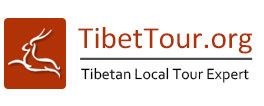


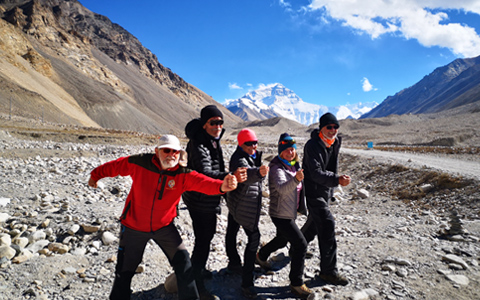

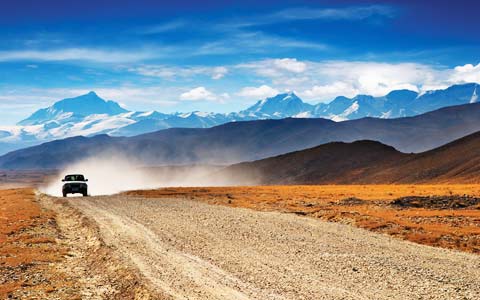

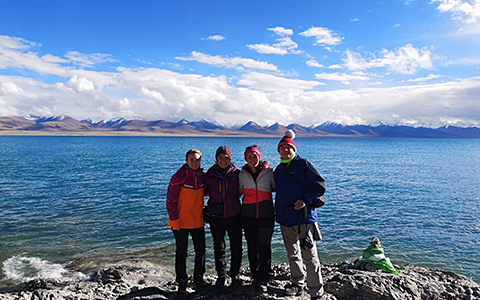









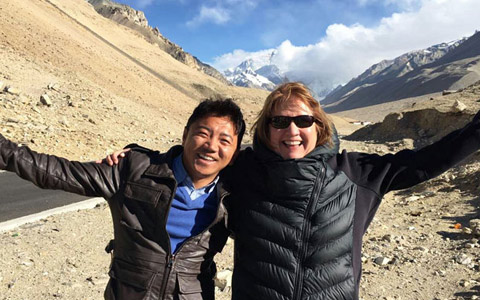






 You can see the Himalayas and other towering mountain ranges in Tibet.
You can see the Himalayas and other towering mountain ranges in Tibet. 
 Taking a Mount Kailash kora trek is a lifetime experience.
Taking a Mount Kailash kora trek is a lifetime experience. Tibet can be visited year-round, including during the winter.
Tibet can be visited year-round, including during the winter. Yarlung Tsangpo River Valley in eastern Tibet has lush forests.
Yarlung Tsangpo River Valley in eastern Tibet has lush forests. Enjoying rich meal in a local Tibetan restaurant
Enjoying rich meal in a local Tibetan restaurant









Ask a Quick Question